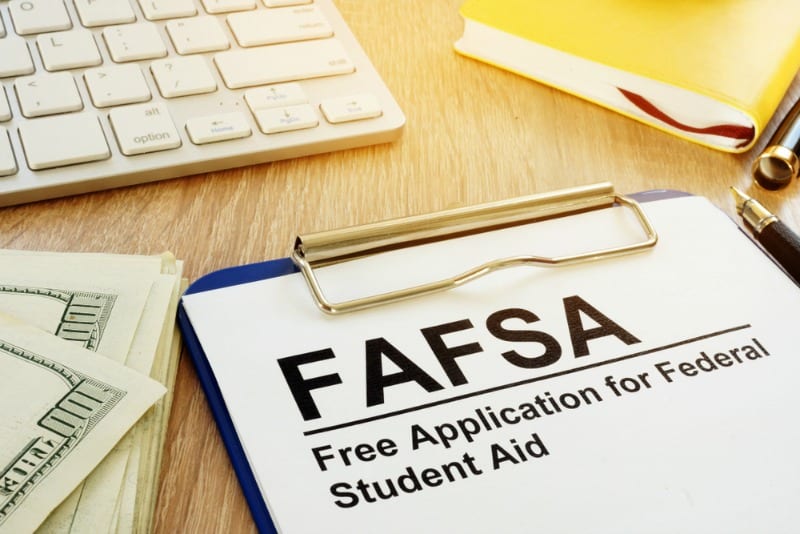The long-awaited changes under the FAFSA Simplification Act will finally see the light of day in December when the U.S. Department of Education releases the FAFSA (Free Application for Federal Student Aid) for the 2024-2025 academic year. One of those changes will be welcome news for grandparents with the means and the desire to help pay for their grandchild’s college education.
Previously, any money that grandparents gave a grandchild for college had to be reported as student untaxed income on the FAFSA, potentially lowering the student’s eligibility for financial aid. Under the upcoming changes, any distributions from a third-party-owned 529 need not be reported on the FAFSA.

Grandparents can maintain a 529 plan with grandchildren as beneficiaries without impacting aid
Grandparents, then, can maintain a 529 account with their grandchildren as the beneficiaries and distribute those funds to their grandchildren without impacting aid eligibility.
Here are some of the ins and outs of this new rule
What is a 529 account?
A 529 is a tax-advantaged account into which parents — and anyone, really — can deposit money in anticipation of one day paying college expenses. Although they are named after Section 529 of the Internal Revenue Code, plans are administered by individual states. Contributions are not federally tax-deductible, but many states do offer a state tax deduction. Earnings will grow tax-free and are not taxed when withdrawn to pay for qualified education expenses.
Is a 529 reported on the FAFSA?
When the owner is a dependent student or custodial parent, the total value of the 529 plan is reported as an investment asset on the FAFSA. A parent-owned account has a minimal impact on financial aid eligibility, and distributions are not considered student income.
So what’s changing?
While a 529 owned by a grandparent (or other third party) for the student’s benefit has never been reported on the FAFSA, a withdrawal will no longer be considered untaxed income the student receives, meaning it will not negatively affect student aid.
This means a grandparent can withdraw funds to help pay for qualified education expenses, which include tuition, room and board, books and supplies, laptops, and internet access.
Student loans can be repaid up to a lifetime maximum of $10,000 per student.
Unqualified expenses include insurance, student health fees, transportation, and extracurriculars; study abroad is covered except for transportation. Paying unqualified expenses incurs a 10 percent penalty.
However, a grandparent’s contributions to a 529 plan are still subject to the federal annual gift exclusion, which is $17,000 for an individual and $34,000 for those filing jointly with a spouse.
A special rule allows gift givers to spread larger one-time gifts across five years’ worth of gift tax returns to preserve their lifetime gift exclusion.
Should the school be paid directly?
While distributions from grandparent-owned 529 accounts (or other third party) paid directly to the school will not affect aid eligibility, it’s safest to still pay the student, who can pay the school directly until we have more clarity on the new rules.
When can the money be withdrawn?
Very important: Withdraw the funds during the same tax year that the educational expenses will be paid. You might be tempted to withdraw money in December to pay for second-semester tuition in January, but don’t.
How much can be withdrawn?
The amount withdrawn from all 529s cannot exceed the cost of the qualified educational expenses being billed by the school. If, for some reason, too much is withdrawn, you have 60 days to pay it back or incur a 10 percent penalty.
If the student receives a scholarship that offsets part of the 529 withdrawal, taxes would be owed, but the funds can be used for any purpose penalty-free.
If you want to take the American Opportunity Tax Credit (AOTC) for qualified education expenses, non-529 funds must be used for up to $4,000. You can’t double-dip by getting the tax credit while paying with 529 money.
One note of caution: If the student is planning to attend one of the 200 or so schools that use the CSS (College Scholarship Service) Profile form to award non-federal institutional aid, it’s possible that distributions from third-party 529s could still be included as student income.
CSS Profile schools are mostly private colleges and universities, with a few “public Ivies” like the University of Michigan, William & Mary, and the University of Virginia. The full list is on the College Board website.
Many changes are coming to the FAFSA, and we won’t know their impact until later this year. Parents — and grandparents — be sure to pay attention!
More Great Reading:









